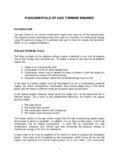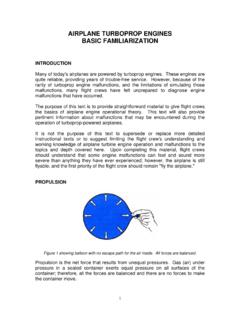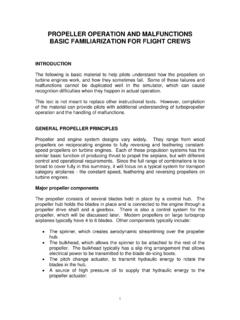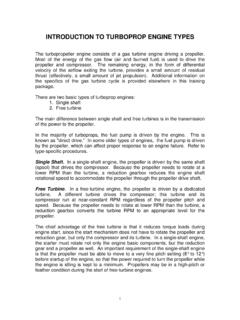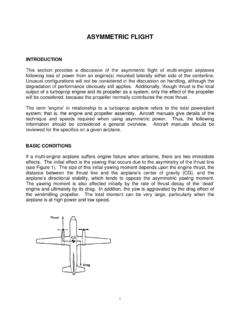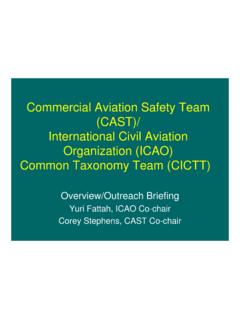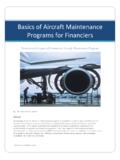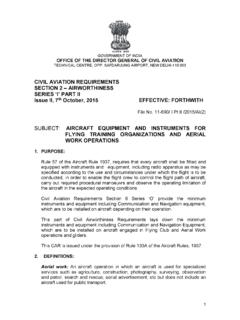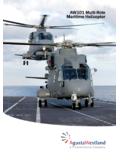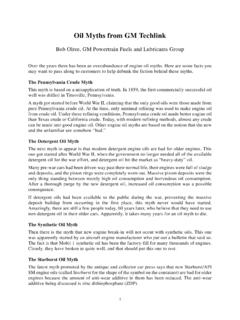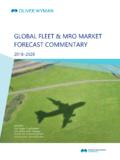Transcription of AVIATION OCCURRENCE CATEGORIES DEFINITIONS AND …
1 AVIATION OCCURRENCE CATEGORIES DEFINITIONS AND usage NOTES June 2004 ( ) INTRODUCTION The International Civil AVIATION Organization (ICAO) and the Commercial AVIATION Safety Team (CAST), which includes Government officials and AVIATION industry leaders, have jointly chartered the CAST/ICAO Common Taxonomy Team (CICTT). The team was charged with developing common taxonomies and DEFINITIONS for AVIATION accident and incident reporting systems. The common taxonomies and DEFINITIONS are intended to improve the AVIATION community's capacity to focus on common safety issues. CICCT includes experts from several air carriers, aircraft manufacturers, engine manufacturers, pilot associations, regulatory authorities, transportation safety boards, ICAO, and members from Canada, European Union, France, Italy, Japan, Netherlands, United Kingdom, and United States.
2 CICTT is co-chaired by a representative from ICAO, and the National Aeronautics and Space Administration (representing CAST). To accomplish its objectives, CICTT plans the development of the following common taxonomies and DEFINITIONS : Phase of Flight (already released); Accident CATEGORIES (already released), OCCURRENCE CATEGORIES (the subject of this release); aircraft Make/Model/Series tables; Engine Make/Model/Series tables; and a detailed taxonomy for accident/incident data systems. It is important to note that CICTT does not expect governments, international organizations and corporations to immediately change existing data systems or existing DEFINITIONS . The intent is to provide target taxonomies and DEFINITIONS so that as organizations make plans for, and implement new safety systems, these new taxonomies and DEFINITIONS are adopted.
3 OCCURRENCE is defined as accident or incident throughout this document. Generally, accidents and incidents differ only in the degree of injury sustained by persons involved or in damage sustained to the aircraft . Each category has a unique name and identifier to permit common coding in accident/incident systems, a text definition , and usage notes to further clarify the category and aid in coding occurrences. This version focuses on powered fixed-wing land and rotorcraft operations. Future updates will cover other aircraft operations. An important element of the OCCURRENCE category design is that it permits the association of multiple CATEGORIES with an OCCURRENCE . Meaning, for example, if an engine failure occurred, AND loss of control followed, the OCCURRENCE would be coded in both CATEGORIES .
4 Multiple coding supports the primary focus of CICTT--accident PREVENTION, in which every pertinent element should be investigated, recorded, and analyzed. As an aide to organizations using the DEFINITIONS , a sample table grouping the CATEGORIES into major operational CATEGORIES is also included as Attachment A. Contact points for all CICTT work are the co-chairs: CAST Co-chair- Corey Stephens ICAO Co-chair- Reinhard Menzel - CAST/ICAO Common Taxonomy Team (CICTT) OCCURRENCE Category DEFINITIONS as of June 2004 Note: revision includes two additional usage notes related to Abnormal runway contact and abrupt Maneuvre which were suggested by the SISG/4 meeting in June 2004. ABNORMAL RUNWAY CONTACT (ARC) Any landing or takeoff involving abnormal runway or landing surface contact.
5 UsageNotes: Events such as hard/heavy landings, long/fast landings, off center landings, crabbed landings, nose wheel first touchdown, tail strikes, and wingtip/nacelle strikes are included in this category. Gear-up landings are also recorded here. However, if a system/component failure or malfunction occurred, which led to the gear up landing, the event is also coded under the appropriate system/component failure or malfunction category. Do not use this category for runway contacts after loosing control, runway contact after take-off. Occurrences, in which the gear collapses daring the take-off run or the landing roll are not included here except if a condition in the usage notes above has been met.
6 NOTE: Throughout this document the term runway or landing area is taken in its broadest sense and includes runways, landing strips, waterways, unimproved landing areas, and landing pads (which may include offshore platforms, building roofs, roads, ships, and fields), or other intended landing areas. ABRUPT MANEUVRE (AMAN) The intentional abrupt maneuvering of the aircraft by the flight crew. usage Notes: This category includes the intentional maneuvering of the aircraft to avoid a collision with terrain, objects/obstacles, weather or aircraft (note: the effect of intentional maneuvering is the key consideration). Abrupt maneuvering may also result in a loss of control or system/component failure or malfunction.
7 In this case the event is coded under both CATEGORIES ( , AMAN and LOC-I, AMAN and SCF-NP, or AMAN and SCF-PP). Abrupt maneuvering may also occur on ground, examples include hard braking maneuver, rapid change of direction to avoid collisions etc. AERODROME (ADRM) Occurrences involving Aerodrome design, service, or functionality issues. usage Notes: Includes anything associated with a State approved Aerodrome- runways, taxiways, ramp area, parking area, buildings and structures, Crash/Fire/Rescue (CFR) services, obstacles on the Aerodrome property, lighting, markings, signage, procedures, policies, and standards. Examples include closed runways, improperly marked runways, construction interference, lighting failures, signage limitations, etc.
8 Occurrences do not necessarily involve an aircraft . CAST/ICAO Common Taxonomy Team (CICTT) OCCURRENCE Category DEFINITIONS as of June 2004 Effects of Aerodrome design are also included here. For example, building layout and architecture which leads to surface wind disruptions would be coded as both ADRM and WS/TRW or TURB as appropriate. ATM/CNS (ATM) Occurrences involving Air traffic management (ATM) or communications, navigation, or surveillance (CNS) service issues. usage Notes: Includes ATC facility/personnel failure/degradation, CNS service failure/degradation, procedures, policies, and standards Examples include, NAVAID outage, NAVAID service error, controller error, Supervisor error, ATC computer failure, Radar failure, and navigation satellite failure Occurrences do not necessarily involve an aircraft .
9 NOTE: ATM includes all of the facilities, equipment, personnel, and procedures involved in the provision of State approved Air Traffic Services. CABIN SAFETY EVENTS (CABIN) Miscellaneous occurrences in the passenger cabin of transport category aircraft usage Notes: Includes significant events related to carry-on baggage, supplemental oxygen, or missing/non-operational cabin emergency equipment. Includes inadvertent deployment of emergency equipment. Includes medical emergency for a person other than a flight crewmember or a medical evacuation patient. Excludes turbulence and other weather related events, which are covered under TURB, ICE, or WSTRW respectively NOTE: Transport Category aircraft includes: -All jets with 10 or more seats or greater than 12,500 lb Maximum Takeoff Weight -All propeller driven airplanes with greater than 19 seats or greater than 19,000 lb Maximum Takeoff Weight CONTROLLED FLIGHT INTO OR TOWARD TERRAIN (CFIT) Inflight collision or near collision with terrain, water, or obstacle without indication of loss of control usage Notes: CFIT is used only for occurrences during airborne phases of flight.
10 CFIT includes collisions with those objects extending above the surface (for example: towers.). CFIT can occur during either Instrument Meteorological Conditions (IMC) or Visual Meteorological Conditions (VMC). CAST/ICAO Common Taxonomy Team (CICTT) OCCURRENCE Category DEFINITIONS as of June 2004 Includes instances when the cockpit crew is affected by visual illusions ( , black hole approaches) that result in the aircraft being flown under control into terrain, water, or obstacles. If control of the aircraft is lost (induced by crew, weather or equipment failure), do not use this category; use Loss of Control Inflight (LOC-I) instead. For an OCCURRENCE involving intentional low altitude operations ( , crop dusting) use the Low Altitude Operations (LALT) code instead of CFIT.
